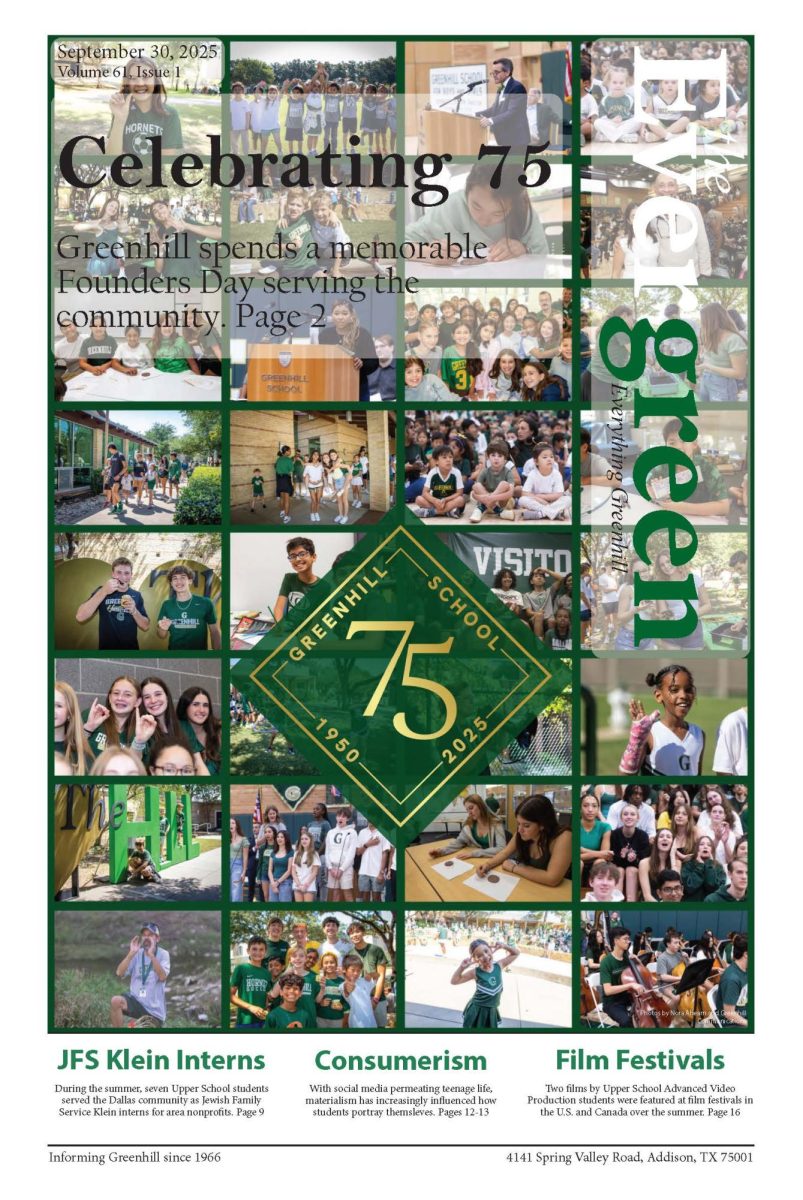Inflation has been at the forefront of American life and media since the economic slowdown from the COVID-19 pandemic. Many voters cited it as one of their greatest concerns in recent national and state elections.
And closer to home, many Greenhill students also say they are feeling the pinch of rising prices.
Economists across the country say there are several reasons for current inflation including labor shortages, pent-up demand after the COVID-19 pandemic and major disruptions to global supply chains caused by events such as the war in Ukraine.
The inflation rate has been decreasing since 2022 when the annual rate soared to 8%. The U.S. Bureau of Labor Statistics Consumer Price Index pegged the annual inflation rate at 2.6% in October, the latest available data at the time of this writing. That number is in line for the Federal Reserve’s target for inflation this year, which is 2%.
But the fact that inflation has dropped back to the neighborhood of the Federal Reserve’s target is scant consolation for students paying higher prices for snacks, drinks and the occasional pencil or notebook.
“The prices are just far too high for what they have in there,” said senior Max Johnson.
Choosing Prices
The subject of Buzz prices is more complex than you might imagine. The vendors Greenhill uses are continuously changing their prices, according to campus store manager Anneli Phillip, who sets prices for The Buzz with Director of Operations and Logistics Crystal Dixon.
Philip attributes the continuous rise in prices to the fact that several of the vendors are smaller businesses that are still recovering from stagnant business during the COVID-19 pandemic.
“I’ve not seen those vendors’ prices go back down,” said Phillip. “So that’s just one thing I have to think about strategically.”
Some snacks at The Buzz don’t have as hefty of a price tag as others. Phillip says this is because she is willing to break even on some items, as long as The Buzz makes an overall profit.
“There’re some products that I’m willing to break even on because it’ll even out,” said Phillip. “But then there’s some products where I’m like, ‘Oh, I can’t break even on that,’ because if I break even on that product, then I’ll break even across the board.”
Spending Habits
The Buzz is undoubtedly one of busiest locations on campus, but for many students, the prices are a bit on the steep side. That’s not a new phenomenon, but, perhaps with all the talk about inflation, some students are more attuned to recent price increases.
Here are some examples cited by students: A year ago, a pack of gum was $1.95 and now it is $2.50; also, the price of one of the most popular ice cream snacks, Nestlé’s Dibs, has soared from $2.99 to $4.25 over the past year.
Despite these spikes, Phillip says that she hasn’t noticed a shift in student buying habits.
“Students are paying [for Nestlé’s Dibs] at $4.25 and I see the kids are okay with that,” said Phillip.
While that may be true for the student body at large, some students say the price increases are a bit aggravating.
“The muffins are like 25 cents more expensive now – and they’re really good, so I have to limit my number of muffins to three instead of four per month so that I don’t spend too much at The Buzz,” said senior Shreya Chhaya.
Some students don’t track their exact spending, but they still notice a change. And on some occasions, students say, the price is leading them to pass on a purchase.
“Sometimes I have to put an item back because I’m like, ‘Wow, it was a little pricier than I thought,’” said junior Kendall Johnson. “I used to always go to The Buzz to hang out with my friends, but now we’re like, ‘Oh my gosh, we don’t need to go as much.’”




